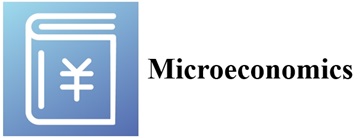Artificial intelligence agents and superstar effects
Abstract
The paper models AI-services market competition in the presence of superstar effects. By modifying the original Rosen’s setup consistently with recent advancements of superstar theory, we discuss the role of scale-related technical change in the advent of superstar artificial intelligent agents and the main consequences of superstar effects on competition between AI-based systems. Furthermore, we outline how to extend the model for addressing three issues: (i) positive feedback loops from data accumulation; (ii) the co-evolution of artificial intelligence agents’ capabilities and market size; and, (iii) the “winner-takes-all” dynamics triggered by superstar effects.
References
1. Sattinger M. Comparative Advantage and the Distributions of Earnings and Abilities. Econometrica. 1975; 43(3): 455. doi: 10.2307/1914276
2. Sattinger M. Differential rents and the distribution of earnings. Oxford Economic Papers. 1979; 31(1): 60-71. doi: 10.1093/oxfordjournals.oep.a041437
3. Rosen S. Hedonic Prices and Implicit Markets: Product Differentiation in Pure Competition. Journal of Political Economy. 1974; 82(1): 34-55. doi: 10.1086/260169
4. Rosen S. The Economics of Superstars. American Economic Review. 1981; 71(5): 845-858.
5. Gabaix X, Landier A. Why Has CEO Pay Increased So Much?*. Quarterly Journal of Economics. 2008; 123(1): 49-100. doi: 10.1162/qjec.2008.123.1.49
6. Terviö M. The Difference That CEOs Make: An Assignment Model Approach. American Economic Review. 2008; 98(3): 642-668. doi: 10.1257/aer.98.3.642
7. Kaplan SN, Rauh J. It’s the Market: The Broad-Based Rise in the Return to Top Talent. Journal of Economic Perspectives. 2013; 27(3): 35-56. doi: 10.1257/jep.27.3.35
8. Korinek A, Ng D. Digitization and the Macroeconomics of Superstars. University of Virginia; 2019.
9. Korinek A, Stiglitz J. Artificial Intelligence, Globalization, and Strategies for Economic Development. National Bureau of Economic Research; 2021.
10. Koenig F. Technical Change and Superstar Effects: Evidence from the Rollout of Television. SSRN; 2022.
11. Rock U. Engineering Value: The Returns to Technological Talent and Investment in AI. SSRN; 2021.
12. Suh D. Machines and Superstars: Technological Change and Top Labor Incomes. SSRN; 2023.
13. Acemoglu D, Autor D. Skills, Tasks and Technologies: Implications for Employment and Earnings. Handbook of Labor Economics. 2011; 4: 1043-1171.
14. Autor D, Goldin C, Katz L. Extending the Race between Education and Technology. National Bureau of Economic Research; 2020.
15. Good I. Speculations concerning the first ultraintelligent machine. Advances in Computers. 1965; 6: 31-88. doi: 10.1016/S0065-2458(08)60418-0
16. Smith HL. Planar competitive and cooperative difference equations. Journal of Difference Equations and Applications. 1998; 3(5-6): 335-357. doi: 10.1080/10236199708808108
17. Clark D, Kulenovíc M. A Coupled System of Rational Difference Equations. Computers and Mathematics with Applications. 2000; 43(6-7): 849-867. doi: 10.1016/S0898-1221(01)00326-1
18. Köner K. (How) will the EU become an AI superstar?. EU Monitor: Digital Economy and Structural Change; 2020.
Copyright (c) 2025 Author(s)

This work is licensed under a Creative Commons Attribution 4.0 International License.



 Submit a Paper
Submit a Paper